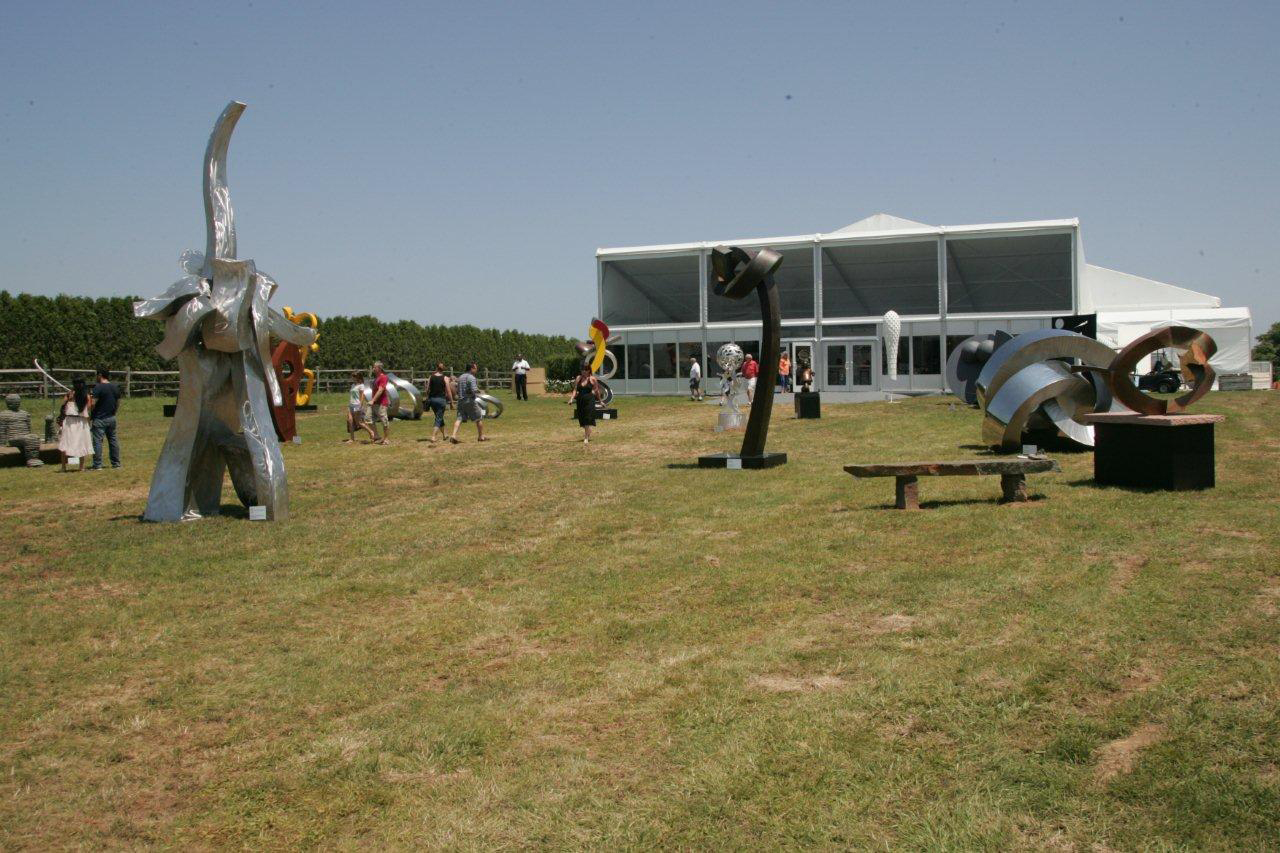Getting Personal Over Art

“I hate art fairs,” was the first thing this critic heard at ArtHamptons from the mouth of an established Manhattan dealer who is also a local resident. “Nothing personal,” he made clear, referring to his experience as an exhibitor at last week’s ArtHamptons here on the East End. Yet his remark seemed salient and needed more clarification. How “personal” is ArtHamptons anyway?
For example, what does ArtHamptons suggest about fairs in general, if anything? What part does the economy play in its success? What does this venue say about the quality of art (or lack thereof)? Finally, why do galleries participate in ArtHamptons?
The answers come from this art critic’s observations and conversations with exhibitors, past and present. Many people may disagree with the comments and conclusions, of course, but an attempt has been made to keep bias at a minimum. [expand]
First, the good news: most exhibitors who have participated in ArtHamptons agree without a doubt that the physical environment is much better this year. A case in point: there’s better air conditioning and parking. The booths also appear more spacious (at least to this critic). And there are smaller crowds on a Friday afternoon.
There are additional perks as well, including a café (overpriced, however) and a theater where an art-related film, Full Circle, played on Friday afternoon. We hear that the reason for improved logistics may be that some staff came from Miami to help plan the fair this year.
For galleries in the area, ArtHamptons is a definite plus, where works do not have to be shipped very far, and buyers can visit the local venues directly. The fair is an obvious way to promote East End galleries and artists as well as sell art. Local dealers, like Tulla Booth, Eric Firestone, Mark Borghi, Stephan Keszler and Richard Demato, were out in force. So were galleries like Birnam Wood, Halsey McKay and Nova’s Art Project.
Some exhibitors complimented ArtHamptons’ marketing devices, especially in giving away thousands of free passes to the exhibition and the opening. This strategy, no doubt, runs the risk of attracting people who are not collectors or serious about art. The venue becomes just another Hamptons “scene” where spectators are “brain dead,” as one dealer noted, adding that “they just don’t get the art.”
Which brings us to the bad news: the issue of art “quality.” It’s been a mixed bag through the years, according to many exhibitors. (This critic must agree as well.) Some people think there are too many works making up a secondary market and too many random international galleries. Other dealers think there is a lack of focus, with not enough contemporary art. Perhaps what is missing is more conceptual art, but then again, that doesn’t appeal to everyone’s taste.
The point is, taste in art is subjective; it’s “good” art that may be less subjective. So, do art fairs appeal to “taste” or “aesthetics?” No matter what the answer, there should be a range of works available. Then again, that involves the delicate talent of curating which is probably beyond ArtHampton’s intention. We must remember that this kind of venue is not a museum exhibit.
Full disclosure: this critic hates art fairs, too. Probably it’s because of the crowds. And the hype coming from some exhibitors. But that shouldn’t be a surprise. After all, the idea is to sell art, right? [/expand]



